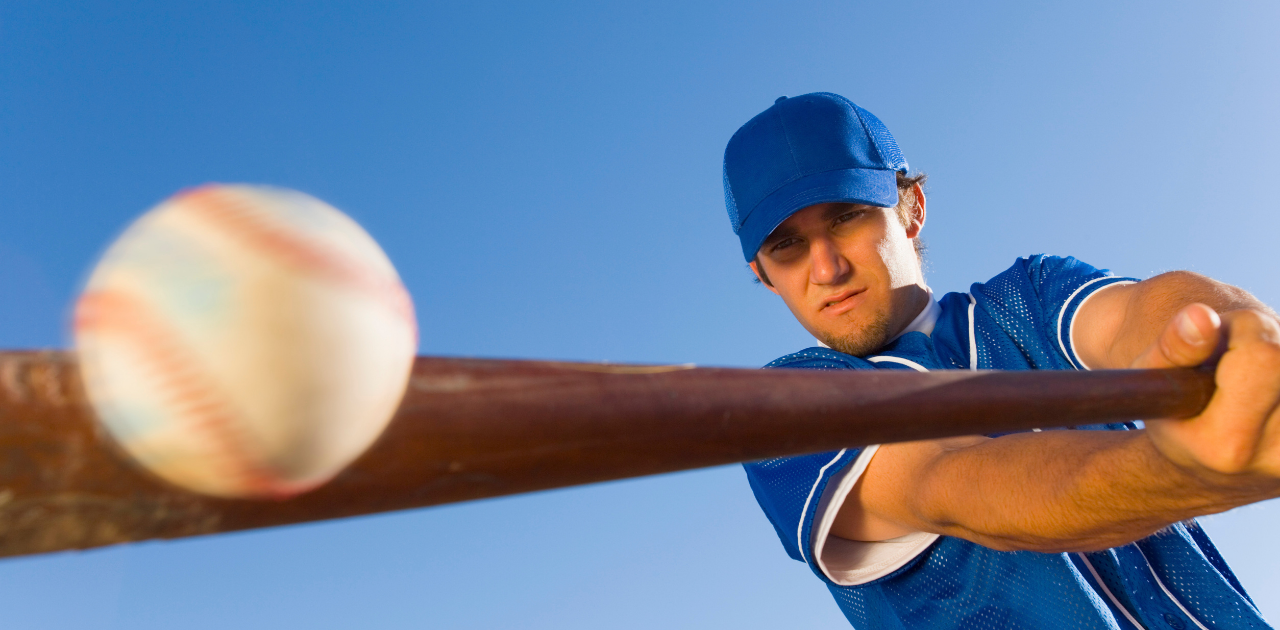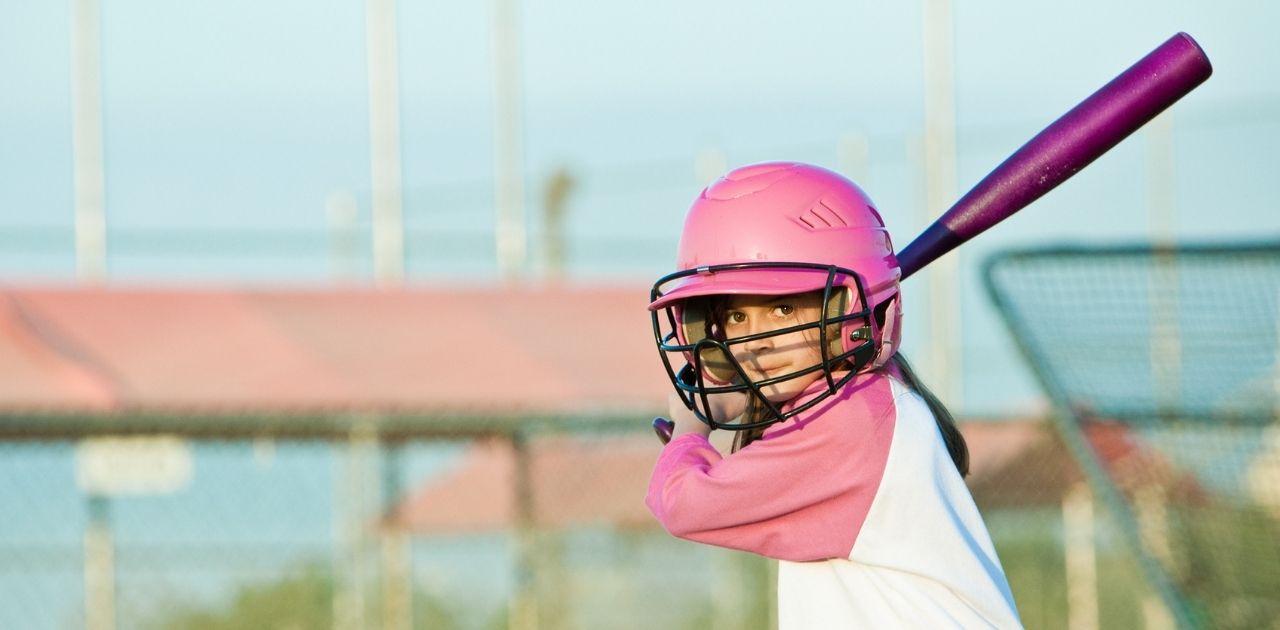We’ve heard it all before—the debate over whether to choose a wood or metal bat seems like it’ll never come to an end. But for any baseball or softball slugger truly serious about improving their game, there’s really only one choice, and you probably know which team we’re on.
The differences between metal and wood bats can be broken down into three categories:
- Performance: how the bat itself performs and how it improves the batter’s own performance
- Safety: too-advanced technology and juicing versus splintering projectiles
- Affordability: taking into account cost, value and longevity
As you’ll see wood shortly, wood bats are superior in just about every way. Let’s break it down!
BAT PERFORMANCE
The biggest difference between wood bats and metal bats is their performance. Related to the bat’s performance, wood bats also help develop and improve the batter’s own performance.
What Wood Baseball Bats Offer

Better Balance
A well-made wood baseball bat is better balanced than any metal bat. Balance gives you a more steady, controlled swing and drives the bat through the ball.
More Natural Power
The unique composition of wood bats and the balance of pop and density are unmatched by metal bats. A good hit with a wood bat will come off the bat faster and go farther than the same hit with a metal bat.
More Muscles
Wood bats are also a little heftier than metal bats, so you’ll build your muscles used for swinging as well—giving you even more power.
More Feedback
Wooden bats force a hitter to develop better mechanics and approach to the ball by getting more feedback with contact. When you hit the ball outside of the sweet spot with a wood bat, you’re gonna feel it and not want to do it again. When you do hit the sweet spot, you’re gonna feel it and you’re gonna like it.
Better Pitch Discipline
Swinging at a bad pitch can leave you with stinging hands or a broken bat. By learning your bat's barrel, you'll work the strike zone better and pick better pitches to slam.
Increased Barrel Awareness
Learning the sweet spot is key to making good contact and maximizing the result of your at-bat. Even metal bats have an optimal area to hit, but they don’t give you as much feedback to learn where. Wood teaches you the best area, which carries over to when you swing a metal bat. It’s not a two-way street!
What Metal Baseball Bats Offer

Larger Sweet Spot
If you want our honest (and completely unbiased) opinion, metal bats are a bit of a cheat code with their enlarged sweet spots. With a bigger sweet spot, you have a larger optimal area to hit the ball with, resulting in more big hits—but not more quality big hits.
Can Turn Bat-Breaking Pitches into Singles
Metal withstands miss-hits farther down the barrel, toward the middle of the bat, much better than a wood bat can. Big hits towards the middle of a wood bat can end with a shattered bat and an easy out, but again the artificial help of the metal bat might turn it into a cheeky base hit.
Size vs Performance
Yes, we wood bat manufacturers get it. You want your bat barrel as big, long and light as possible, with a big sweet spot to boot.
There is no denying that metal and composite bats give you the “bigger” bat. Metal and composite bats are hollow, allowing them to be made as lightly as legally possible.
A properly weighted, single-piece wood bat, being completely solid, has a smaller optimal hitting area (typically 2”-6” in from the barrel end). And, wood bats can only achieve a certain barrel diameter and length before being too top-heavy.
But does that mean you should go with a metal bat? Not so fast. First, examine the swing of the metal batter compared to a hitter with a wood bat.
| TYPE OF BAT: | SWING PATH: TYPICAL BALL | TRAJECTORY: | TYPICAL RESULT: |
| Metal / composite | From low to high | high arc limits distance | pop fly |
| Wood bat | Level swing | gradually rise for extra distance | line drive and beyond |
You can’t beat a solid hit with a good wood bat. No matter who’s hitting, you simply can’t make up for the proper form that wood bats encourage and wood’s natural ball-smacking traits.
PLAYER SAFETY
Fielder safety has taken a much-deserved jump to the forefront in the last decade or so. Anyone who pitches or plays 1st or 3rd base can tell you a story of a ball from a metal bat that nearly took their head off. In youth baseball, there have been even more extreme cases, including fractured jaws, facial bones and skulls, comas and even death.
Fortunately, standards for metal and composite baseball bats (BBCOR), and for softball bats (BST) have been implemented. The goal: make metal perform more like wood bats. Lowering exit velocity means greater reaction time for fielders.
Metal Bat Modification Safety Issues
So, issue solved in making metal bats as safe as wood bats, right? Not exactly. One of the remaining dangers of these non-wood bats is the ability to modify their performance after purchase.
Shaving the inside of a metal bat to create more “trampoline effect” for greater energy transfer is hard to detect. And while softball umps get updated rating sheets every two weeks for bats, it still requires the ump to have the knowledge and eye to spot and catch illegal bats.
Additionally, some well-known amateur governing bodies for baseball and softball, which require their stamp for the bat to be game legal, do zero tests on the bats. Draw your own conclusions as to where these certification fees, paid by bat manufacturers, go.
Wood bat safety
Wood bats are not without their own concerns. Some of the miss-hit singles on metal and composite bats become bat-breaking outs with a wood bat. A few years back, at the pro level, wood bats (especially maple bats) took a bad rap for “excessive” breakage. It doesn’t help when you would see a barrel head go flying into the stands or at a fielder.
Simple physics explains why a big barrel plus a thin handle is a bad durability equation. In reaction, the Commissioner’s Office in pro baseball did implement some solid changes. This included clamping down on billet weights that can be used for certain players, based upon years of play in pro ball. With these changes, bat breakage is way down at the pro level, proving there is nothing inherently dangerous about wood bats.
A quality wood bat manufacturer should be carrying these standards down to the amateur level, all the way down to youth bats. If you are seeing a drop weight lighter than the following, then you should be aware of that durability issue. “Too light” can also create safety concerns, of part of the bat becoming a projectile if used against age-appropriate or faster pitch speeds.
- -3 for high school age
- -5 for 12 to 13-year-olds
- -8 for 11-year-olds and under
BAT AFFORDABILITY
Pricing for high-demand metal and composite bats runs about 3 to 4 times that of a quality wood bat. For many players, replacing their metal and composite bat every year at a cost of $300-400 (due to dead spots developing, falling out of compliance, or out of popularity), a wood bat is actually more cost-effective.
Once you learn how to properly hit with a wood bat (hitting on the sweet spot and laying off bad pitches), a wood bat will last you a while. If you’re breaking 3 or 4 bats a year (equal to what you would have spent on a metal or composite bat), you’ve either purchased a low-quality bat...or it’s time to take up another sport!
THE VERDICT: WOOD IS THE WAY TO GO
Ultimately, wood bats should be the way of the future, just as they’ve been since the beginning. While the “sweet spot” may be more difficult to find, when a player does find it, nothing can beat their distance and trajectory. If a wood bat is properly weighted, it can help a player turn pop-up outs into a base hit.
And perhaps the most important consideration of wood bats—they’re safer. It’s not uncommon for in-field players to narrowly avoid a ball flying at their head from a composite bat, especially if it’s been illegally modified.
Finally, you could argue that wood bats break easier, but they’re much less expensive to replace than metal or composite ones.
Follow our hitting and care tips (included with every order), practice with wood….and watch the results!
Browse our wood baseball and softball bats here!
Check out our related posts!

